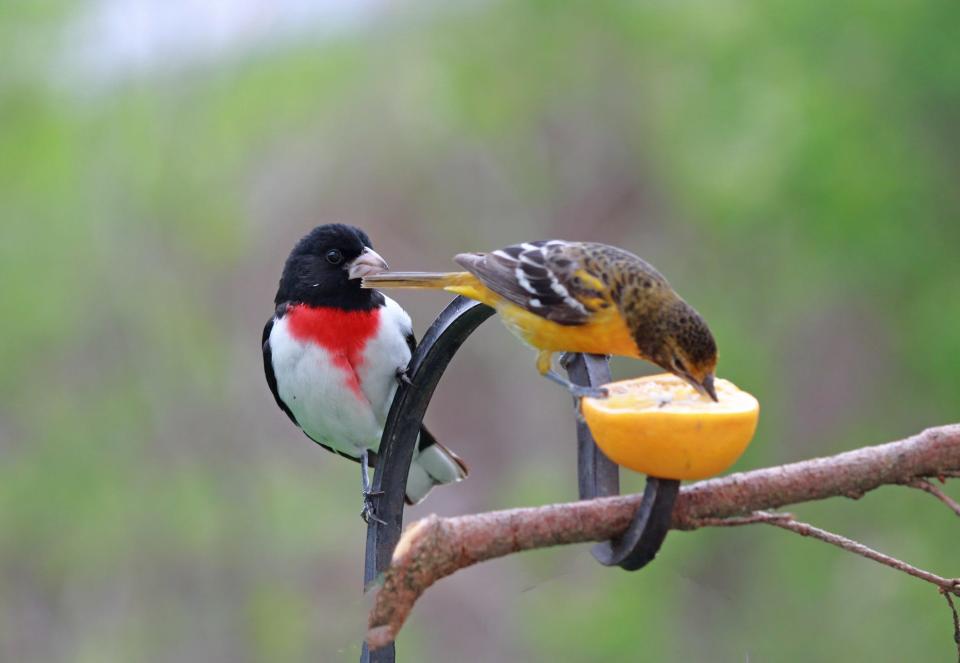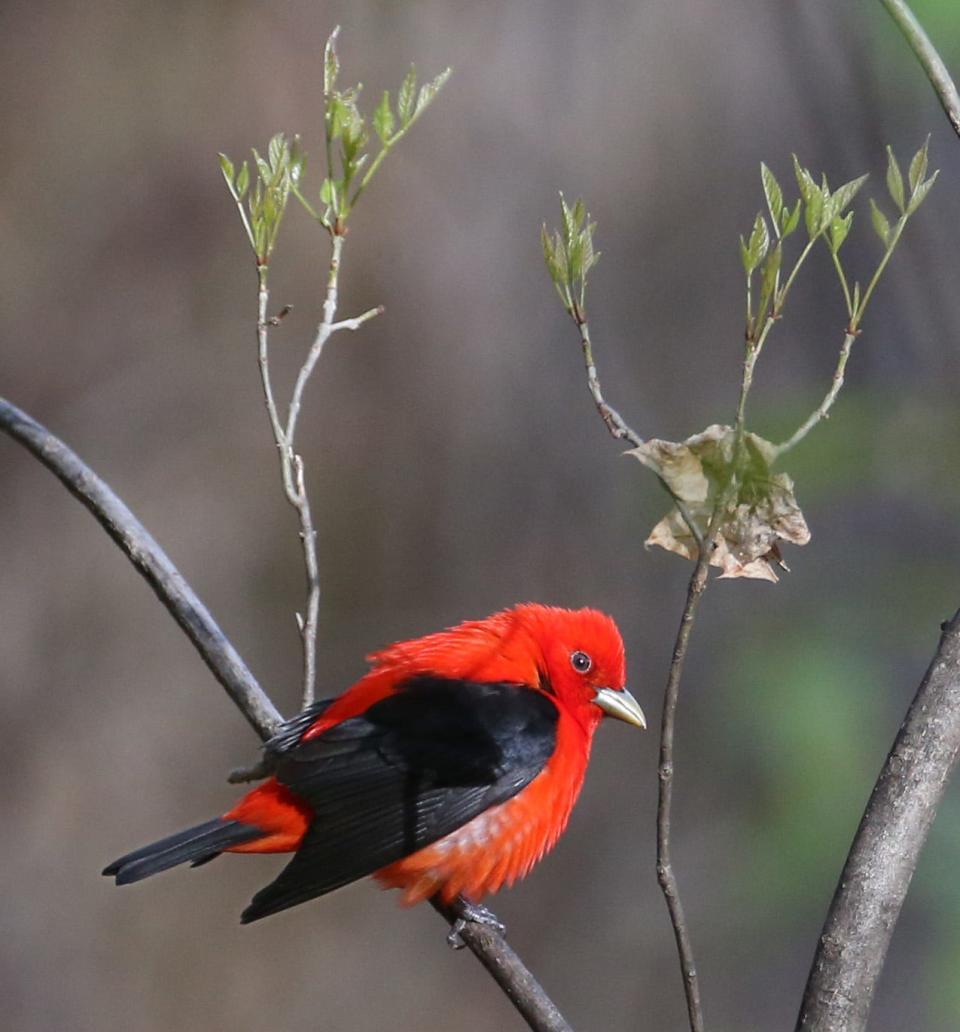Mid-May offers the best birding of the year. What you can see now across the northeast
Right now, during mid-May, we are in the midst of peak songbird migration. Many of us are noticing the arrival of several familiar favorites in our yards.
Even though many of us have seen some of these favorites since early May, this is the time when the bigger populations arrive – generally in sync with the warming days of May which, in turn, results in a much larger insect population! Insects are so important in the food chain in our ecosystem.
A little cool-down like we had over Mothers’ Day weekend temporarily slows the growth of the insect population which could be why you may have been seeing more birds at your grape jelly – especially orioles. Once the orioles find your grape jelly, they may continue to patronize your offerings all spring and summer as a supplement to their diet. Everyone’s situation is different. You may be inundated with orioles this year – or maybe not – or maybe not yet!
There are two species of orioles – the Baltimore and the Orchard. The most common by far is the Baltimore with its strikingly bright orange and black plumage. This oriole is likely going to be nesting in a shade tree in your yard or very near by. If you watch them closely you may actually figure out just where they are building their sac-like nest of fibers. They may even take some short pieces of string that you put out near your grape jelly.

The Orchard oriole is a touch smaller and looks very different. The male is a combination of black and very dark rusty-red – a slender bird that at first almost looks all black until it is seen in better light. The first-year male is greenish with black around its face. The females of both orioles are more yellowish. The songs of the two orioles are easy to tell apart – especially once you experience and learn the distinct chattering call and song of the Orchard.
Like most situations, taking a little time to watch them in your yard will pay off! The Orchard orioles have nested here for several years now and probably longer – before I knew they were even present. Their nest is also woven into fine tree branches, but more securely than Baltimore’s nests. Often, they are lower to the ground as well. Finding their nests can be challenging, but staying aware of the female being flushed from the nest helps. The male flits from tree to tree singing much of the day, outlining its nesting territory.
Hummingbirds are so much fun to have around – so entertaining! If you don’t have a sugar water (hummingbird) feeder for them, I would recommend one. A basic one is fine and they almost always are made of attractive red plastic so no need to color the sugar water. The mixture is four parts water to one part sugar and let boil for a couple of minutes. Then let cool to room temp and fill the feeder. It’s that simple. Here at our home, we go a little crazy with flowers in our garden but watching the hummers frequent the flowers is very rewarding.
Speaking of feeding the birds, many seed-eating birds are around and there are few natural seeds available this early in the year so they naturally like to partake of your offerings. Summer bird feeding does not disrupt the birds’ feeding habits and they are all perfectly able to find other food without your bird feeder. Though you may be feeding a lot of feed on a daily basis, remember that the bird population is many times larger than it is in winter.
Feeding the birds allows us to see many more birds up close than otherwise including the cardinals, goldfinches, purple finches, rose-breasted grosbeaks, and maybe some indigo buntings. All of these birds also enjoy eating plenty of insects and insect larvae.

Right now is peak warbler migration – nearly 30 species moving through – several of which will be nesting here in our local habitats. Watch for the beautiful scarlet tanagers as they nest here. If you have the Merlin phone app listen to their call and song and you might be surprised that they are very close by in your woods or hedgerow – same is true for indigo buntings. Remember that if you want rose-breasted grosbeaks and purple finches to be steady patrons at your feeding station to always have at least one feeder that has lots of sunflower seeds available!
Eastern Bluebirds, our state bird, are in full nesting mode – most of them are now feeding young and may fledge soon. Remember that once they fledge to clean out the nest box completely. The same is true if their nesting failed. They generally prefer to build a new nest for the next brood. Also remember that at any time, you could have bluebirds move in to an available nest box.
If you are allowing house sparrows to nest in these boxes, think again. The more of these nasty bluebird enemies there are, the more they will kill bluebirds and disrupt future bluebird nestings. Tree swallows and chickadees are welcome nest box users. If you have wrens using your nest boxes, the nest boxes are way too close to bushes and quick cover! During cold spells you can offer mealworms to your bluebirds which can help improve the chances of their brood being successful.
More: An old tom leaves turkey hunters empty-handed again: Outdoors column
It’s a wonderful time of year and I could go on for days expressing the many joys of having birds around your home, your farm, and your gardens! As always, if you have a group that would like to do a bird walk with me here at our home let me know.
On June 9 I am leading a field trip here at our home and farm at 7:30 a.m. in conjunction with the Rochester Birding Association. No fee and no reservation needed. I hope you can join us! Our address is 6340 LaGrange Road Wyoming, NY 14591 and my cell is 585-813-2676. Call with any questions, comments, or other information.
Happy birding!
-- Hans Kunze writes a bi-weekly birding column.
This article originally appeared on The Evening Tribune: Songbird migration peaks in mid-May, offering best birding of the year

